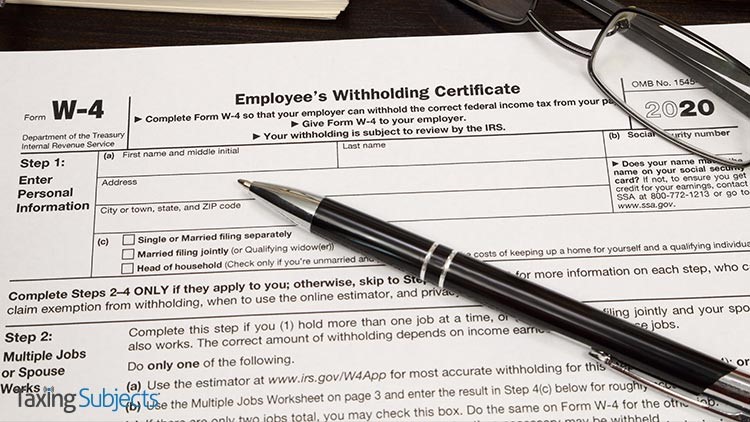by | Jun 6, 2021 | Tax Tips and News
By most measures, 2021 is shaping up to be much better than 2020. The coronavirus appears to be less of a threat, the economy is beginning a comeback, and the American Rescue Plan is expanding some tax credits for parents and others with children.
The American Rescue Plan (ARP) was passed by Congress earlier this year. The new law sent out direct Economic Impact Payments to millions of Americans. But it also changed tax laws for 2021—and beyond.
Earned Income Tax Credit (EITC)
The EITC has been a workhorse tax credit for some time now, providing working families with a needed tax break. The ARP expands the credit, so more workers and working families who also have investment income can qualify for the EITC.
Starting this year, qualified filers can receive up to $10,000 in investment income and still be eligible for the EITC. The new law also opens doors for separated spouses.
Those who are married but separated can now qualify for the EITC if they live with their qualifying child for more than half the year and can satisfy one of these two requirements:
- The taxpayer doesn’t “have the same principal place of abode as the other spouse for at least the last six months of tax year for which the EITC is being claimed”
- The taxpayer is “legally separated according to their state law under a written separation agreement or a decree of separate maintenance and does not live in the same household as their spouse at the end of tax year for which the EITC is being claimed”
Child Tax Credit (CTC)
The Child Tax Credit saw four major changes that apply only for the 2021 tax year. The American Rescue Plan increased the amount of the credit and made the CTC available for qualifying children who turn age 17 in 2021.
But the ARP made two more changes that millions of families are likely to see firsthand. The CTC was also made fully refundable for most taxpayers and for the first time, qualified taxpayers will be able to get half of the estimated 2021 credit—in advance.
Those taxpayers with qualifying children under age 18 at the end of 2021 can now get the full credit even if they have little or no income.
Before this year, the credit was capped at $2,000 per qualifying child and was refundable up to $1,400 per child. The American Rescue Plan boosts the credit limit to $3,000 per child aged 6 through 17 at the end of 2021; the cap rises to $3,600 each for children age 5 and under at the end of 2021.
The ARP also expands the number of taxpayers who will get cold cash in their pockets from the Child Tax Credit. The credit is fully refundable for those who have their main homes in the U.S. for more than half the tax year. Bona fide residents of Puerto Rico enjoy the same privilege.
If a taxpayer qualifies for the fully refundable credit, the normal $1,400 cap does not apply. A taxpayer qualifies for the maximum credit if they have a modified adjusted gross income of:
- $75,000 or less for single filers and married persons filing separate returns
- $112,500 or less for heads of household
- $150,000 or less for married couples filing jointly and qualifying widows and widowers
Above these levels, the credit begins a phase-out.
Advance Child Tax Credit Payments
The IRS says it expects to send out advance payments of the Child Tax Credit from July 15 through December of this year. Eligible taxpayers will get half of their estimated 2021 CTC in monthly payments during that time.
The payments will go out to those taxpayers who qualify for the Child Tax Credit and have a main home in the U.S. for at least half of the year. This includes all 50 states and the District of Columbia. American military personnel who are stationed outside of the country on extended active duty are also eligible, since they are considered to have a main home in the United States.
“The monthly advance payments will be estimated from their 2020 tax return, or their 2019 tax return if 2020 information is not available,” the IRS explains. “Advance payments will not be reduced or offset for overdue taxes or other federal or state debts that taxpayers or their spouses owe.”
Since the advance payments amount to half of the tax credit, taxpayers can claim the remainder when they file their 2021 income tax return.
Source: Looking ahead: How the American Rescue Plan affects 2021 taxes
– Story provided by TaxingSubjects.com
by | Jun 5, 2021 | Tax Tips and News
Uncle Sam is reminding its citizens who live and work outside its borders that their tax deadline is rapidly approaching.
While the bulk of taxpayers had to get their tax returns filed by May 17 this year, U.S. citizens and resident aliens who live abroad—as well as those with dual citizenship—have to file by June 15.
Just like their fellow citizens inside the U.S., those living abroad have to file a tax return with the IRS every year. They usually automatically get a two-month extension of time to file, putting the deadline this year at June 15.
Stateside taxpayers got an extension from April 15 to May 17, but foreign taxpayers didn’t receive another extension beyond the normal postponement.
Even if a foreign-based U.S. taxpayer doesn’t expect to owe tax thanks to tax benefits such as the Foreign Earned Income Exclusion or the Foreign Tax Credit, they’re still required to file an income tax return by the deadline. The tax benefits are only available if they file a return.
The Internal Revenue Service says taxpayers claiming the special June 15 deadline should attach a statement to their return if one of two conditions apply:
- The taxpayer’s tax home and abode are both outside the U.S. and Puerto Rico, or
- The taxpayer was serving in the American military outside the U.S. and Puerto Rico on the regular due date for the return.
Even with the prior extension of time, some taxpayers may not be able to get their return in on time. Individual taxpayers who need more time to file can complete and mail Form 4868, Application for Automatic Extension of Time to File U.S. Individual Income Tax Return. Click here to find out where to mail the form.
Businesses that have to file income tax returns should file Form 7004, Application for Automatic Extension of Time To File Certain Business Income Tax, Information, and Other Returns.
Report foreign accounts and other assets
An important part of filing for foreign-based income tax filers is reporting any worldwide income to the IRS. This can include income from foreign trusts and foreign bank or securities accounts.
Taxpayers with this kind of income will generally have to include Schedule B to their tax return. Schedule B’s Part III asks the taxpayer for information on any foreign accounts, and requires the taxpayer to report the country where each account is located.
Some taxpayers may also have to include Form 8938, Statement of Foreign Financial Assets. U.S. citizens, resident aliens and some nonresident aliens usually have to report specified foreign financial assets on this form if the total value of those assets are above certain limits. For details, see the directions for Form 8938.
Another layer of reporting is required for taxpayers who have either an interest in, or signature or other authority over foreign financial accounts with a total value of more than $10,000 at any time during 2020. These taxpayers must electronically file a Financial Crimes Enforcement Network (FinCEN) Form 114, Report of Foreign Bank and Financial Accounts with the Treasury Department.
Form 114 is only available through the BSA E-filing System website.
While the original deadline for filing the annual FBAR report was April 15, FinCEN gives those who missed the deadline an automatic extension until Oct. 15 to file. There’s no need to request the extension.
Foreign-based filers should remember that when reporting income or deductible expenses, the amounts must be reported in U.S. dollars.
FinCEN Form 114 and IRS Form 8938 both require the use of a December 31 exchange rate for all transactions regardless of the actual rate on the date of the transaction.
For information on exchange rates, refer to Foreign Currency and Currency Exchange Rates.
Reporting for expats
Those taxpayers who gave up their U.S. citizenship or ceased to be lawful permanent residents of the U.S. during 2020 have to file a dual-status alien tax return, attaching Form 8854, Initial and Annual Expatriation Statement.
A copy of Form 8854 should also be mailed to this IRS address:
Internal Revenue Service
3651 S IH35 MS 4301AUSC
Austin, TX 78741
The form should be mailed by the due date of the tax return, including any extensions.
For more information, see the instructions for Form 8854 and Notice 2009-85, Guidance for Expatriates Under Section 877A.
More time for some members of the military
Members of the American military can qualify for even more time to file and pay their taxes. If either of these two conditions apply, they can get an additional extension of 180 days to file and pay any tax due:
- They serve in a combat zone or have qualifying service outside of a combat zone or
- They serve on deployment outside the United States away from their permanent duty station while participating in a contingency operation. This is a military operation designated by the Secretary of Defense or results in calling members of the uniformed services to active duty (or retains them on active duty) during a war or a national emergency declared by the President or Congress.
Individuals serving in a combat zone or a contingency operation in support of the Armed Forces are also granted extended deadlines. This includes Red Cross personnel, accredited reporters and civilian personnel acting under the direction of the Armed Forces in support of their forces.
Spouses of those who served in a combat zone or a contingency operation generally are entitled to the same deadline extensions, however, some exceptions apply. Details and other military tax information is available in IRS Publication 3, Armed Forces’ Tax Guide.
More information for foreign-based filers may be found in About Publication 54, Tax Guide for U.S. Citizens and Resident Aliens Abroad; and About Publication 519, U.S. Tax Guide for Aliens.
– Story provided by TaxingSubjects.com
by | Jun 2, 2021 | Tax Tips and News
Now that the income tax filing deadline has passed, it’s a good time to take a hard look at whether we have the right amount of taxes withheld from our paychecks. After all, getting hit with a big tax bill after filing can often mean that the employee isn’t withholding enough of their paycheck to cover taxes.
Adjusting withholding also makes sense if a taxpayer has had life changes during the previous year, such as getting married. Fortunately, taxpayers don’t have to do this on their own, since the Internal Revenue Service has some resources they can use to make the right decision.
To make changes to withholding, taxpayers should check with their employer; they may have to file a new Form W-4, Employee’s Withholding Certificate.
When should taxpayers make an adjustment to withholding?
The IRS says that taxpayers who hold down multiple jobs or receive income from a source that’s not subject to withholding might need to increase the amount of withholding on their paychecks. Without changes, these taxpayers run the risk of owing additional tax—and maybe even penalties—the next time they file a tax return.
On the other hand, the agency suggests a decrease in withholding may be advisable if the taxpayer qualifies for tax credits or deductions beyond just the standard deduction.
If adjustments are needed either way, the taxpayer will have to submit a new Form W-4 to their employer as soon as possible. Withholding, after all, goes on all year.
Who should check withholding?
The IRS recommends a check of withholding levels for certain categories of taxpayer. The agency says these include:
- [Taxpayers] whose spouse is an employee
- [Taxpayers] who work two or more jobs at the same time or only work for part of the year
- [Taxpayers] who claim credits such as the child tax credit
- [Taxpayers] with dependents age 17 or older
- [Taxpayers] who itemized deductions on prior-year returns
- [Taxpayers] with high incomes and more-complex tax returns
- [Taxpayers] with large tax refunds or large tax bills for last year
The Tax Withholding Estimator can remove guesswork
The IRS Tax Withholding Estimator can help employees, retirees and self-employed taxpayers figure out if a change in withholding is needed. This online tool uses a step-by-step approach. Users can check their withholding and get suggestions tailored for the amount of refund they’d like to get at tax time.
The Tax Withholding Estimator can help taxpayers determine if they need to fill out a new Form W-4 and what information should go on it. Using the Tax Withholding Estimator also saves time, since the online tool fills out the form’s worksheets.
Before using the online tool, taxpayers should have a few pieces of information handy, including:
- Most recent pay statements
- Information from other income sources
- Most recent income tax return
However, the IRS notes the estimator “does not ask for sensitive information such as name, Social Security number, address, or bank account numbers.”
What about state income tax withholding?
If changes in federal withholding are needed, taxpayers may need to adjust their state tax withholding as well. They can check with their state’s department of revenue for more information.
Still have questions about withholding? Check out the Tax Withholding Estimator FAQs, and Publication 505, Tax Withholding and Estimated Tax.
Source: Checking withholding can help taxpayers decide if they need to give their employer a new W-4.
– Story provided by TaxingSubjects.com
by | May 29, 2021 | Tax Tips and News
The Internal Revenue Service is willing to stay the course on interest rates, announcing rates for the third quarter of 2021 will be just the same as the previous two quarters.
The Internal Revenue Code mandates the rate of interest to be determined on a quarterly basis—and the Q3 rates are here:
- 3% for individual overpayments
- 2% for corporate overpayments
- 5% for the portion of a corporate overpayment exceeding $10,000
- 3% for underpayments
- 5% for large corporate underpayments
Taxpayers who aren’t corporations have a simple calculation to figure the applicable rate of interest. Since those taxpayers’ overpayment and underpayment rates are the same, either rate will be the sum of the federal short-term interest rate plus 3 percentage points.
Corporations tend to have lower interest rates for overpayments—especially large ones—and large corporations have a higher rate for underpayments.
“Generally, in the case of a corporation, the underpayment rate is the federal short-term rate plus 3 percentage points and the overpayment rate is the federal short-term rate plus 2 percentage points,” the IRS explains. “The rate for large corporate underpayments is the federal short-term rate plus 5 percentage points. The rate on the portion of a corporate overpayment of tax exceeding $10,000 for a taxable period is the federal short-term rate plus one-half (0.5) of a percentage point.”
What separates the large corporation from the not-so-large corporation is spelled out in the instructions for Form 2220, Underpayment of Estimated Tax by Corporations:
“A large corporation is a corporation (other than an S corporation) that had, or whose predecessor had, taxable income of $1 million or more for any of the 3 tax years immediately preceding the 2020 tax year, or if less, the number of years the corporation has been in existence.”
The IRS will make these rates official with Revenue Ruling 2021-10, which will announce the rates of interest. The ruling is expected to be included in Internal Revenue Bulletin 2021-25, due out June 21.
Sources: Interest rates remain the same for the third quarter of 2021; Instructions for Form 2220, Underpayment of Estimated Tax by Corporations.
– Story provided by TaxingSubjects.com
by | May 26, 2021 | Tax Tips and News
Spring has sprung. Income tax filing season is over, and that means it’s time to get ready for the annual Virtual Nationwide Tax Forum. This year’s event will be held over five weeks, with live-streamed seminars three days each week.
The Nationwide Tax Forum is the IRS’ signature event, a summer tradition going back some 30 years. It targets the nation’s tax professionals, providing education and updates on a number of topics, such as tax law, cybersecurity, and ethics. In fact, registering and attending the Virtual Nationwide Tax Forum allows many tax pros to completely satisfy their annual requirements for continuing education.
While the Nationwide Tax Forum has historically been an in-person event, the IRS decided this year’s event would once again be held virtually—just as an extra measure of caution and to help ensure everyone’s safety.
How do I register for the 2021 Virtual Nationwide Tax Form?
The IRS says registration for the 2021 Virtual Nationwide Tax Forum is now open. Those who register by 5:00 p.m. EST on June 15 will qualify for the Early Bird rate of $240 per person. On June 16, registration reverts to the standard rate of $289 per person.
Everyone loves a discount …
Those lucky tax professionals who belong to one of the IRS’ partner organizations for the Tax Forum qualify for a $10 discount off the Early Bird registration price—but only if they register by the June 15 cutoff date. These partner groups include:
- American Bar Association (ABA) Section of Taxation
- American Institute of Certified Public Accountants (AICPA)
- National Association of Enrolled Agents (NAEA)
- National Association of Tax Professionals (NATP)
- National Society of Accountants (NSA)
- National Society of Tax Professionals (NSTP)
- Low Income Taxpayer Clinics (LITC)
- Volunteer Income Tax Assistance Program (VITA)
The IRS says members of these groups should contact their respective associations directly for more information.
This year’s highlights …
The 2021 event starts on July 20 and continues through August 19. During that time, webinars will be live-streamed on Tuesdays, Wednesdays, and Thursdays. Registration enables a tax pro to take part in every one of the live webinars and earn up to 28 continuing education credits.
Internal Revenue Service Commissioner Chuck Rettig will kick off the Tax Forum, delivering the traditional keynote address. Commissioner Rettig will be followed by a plenary session that spotlights changes to tax law and publication updates.
Later, multiple sessions will zero-in on a wide spectrum of topics including virtual currencies, the gig economy, the new Advance Child Tax Credit, advanced cybersecurity, professional ethics and more. Presenters will include IRS experts and those from tax partner groups.
For the first time, the plenary session and an ethics webinar will be available in both English and in Spanish. Attendees in the Virtual Expo will also have access to additional multilingual sources.
Details about courses—including webinar titles, descriptions and a course schedule—are now available.
Connect with the Virtual Expo
Registration for the 2021 Virtual Nationwide Tax Forum includes access to the Virtual Expo. The Expo is where exhibitors from dozens of leading companies throughout the tax industry show off the latest and greatest in hardware, software, services and more. Industry professional organizations and key IRS offices also are represented in the Expo.
The IRS multilingual engagement and services booth is new for 2021, and has expanded resources, IRS publications, forms, and webpages now available in multiple languages. IRS exhibitors will also share some news about upcoming multilingual projects.
The agency also lists the following highlights:
- The latest tax products and software
- The IRS Zone and engagement with representatives from IRS program offices
- Bonus Q&A sessions in the Speaker’s Corner
- Live webinars from many of [the IRS’s] sponsors
Those attendees who would like to share their opinions directly with the IRS will get their chance at the 2021 Virtual Nationwide Tax Forum. The agency will assemble small, virtual focus groups to share their experiences and talk over creative ideas directly with IRS experts and others. Check the Tax Forum website for topics and the qualifying criteria for the focus groups.
Come see us at the IRS Virtual Expo!
Don’t forget to check out the Drake Software virtual booth during the IRS Virtual Nationwide Tax Forum!
Source: IR-2021-118
– Story provided by TaxingSubjects.com
by | May 25, 2021 | Tax Tips and News
The loss of health insurance is a major concern for the millions of Americans who have filed for unemployment throughout the pandemic. While COBRA continuation coverage can help bridge the gap between jobs, former employers generally are not required to pay part of the premiums—meaning some beneficiaries have to foot the entire bill for their insurance.
Congress sought to address this issue with a provision in the American Rescue Plan Act of 2021 (ARP) that provides COBRA premium assistance and provider-related tax credits. As with any other major legislation affecting taxes, that meant the Internal Revenue Service had to determine the best way to administer those provisions.
Last week, the agency announced the publication of Notice 2021-31, which includes “guidance for employers, plan administrators, and health insurers regarding the new credit available to them for providing continuation health coverage to certain individuals under COBRA.”
How does the American Rescue Plan Act affect COBRA continuation coverage?
“The American Rescue Plan provides a temporary 100 percent reduction in the premium that individuals would have to pay when they elect COBRA continuation health coverage following a reduction in hours or an involuntary termination of employment,” the IRS explains. “The new law provides a corresponding tax credit for the entities that maintain group health plans, such as employers, multiemployer plans, and insurers.”
While COBRA is a federal plan that affects most employers with 20 or more full-time employees, the IRS notes that some states have their own version of continuation coverage. Employees receiving benefits from what the IRS calls “state ‘mini-COBRA’” plans are also eligible to receive premium assistance.
How long will the COBRA premium assistance last?
The IRS says ARP will provide COBRA premium assistance for “Assistance Eligible [Individuals]” from April 1, 2021 to September 30, 2021 (1). However, “premium assistance is not available if an individual is eligible for coverage under any other group health plan or for Medicare” (2).
What else is included in Notice 2021-31?
Notice 2021-31 includes a nearly 40-page question-and-answer section that covers the following COBRA premium assistance topics:
- Eligibility for COBRA Premium Assistance
- Reduction in Hours
- Involuntary Termination of Employment
- Coverage Eligible for COBRA Premium Assistance
- Beginning of COBRA Premium Assistance Period
- End of COBRA Premium Assistance Period
- Extended Election Period
- Extensions Under the Emergency Relief Notices
- Payments to Insurers Under Federal COBRA
- Comparable State Continuation Coverage
- Calculation of COBRA Premium Assistance Credit
- Claiming the COBRA Premium Assistance Credit
To learn more, check out the links below.
Sources: IR-2021-115; Notice 2021-31
– Story provided by TaxingSubjects.com






